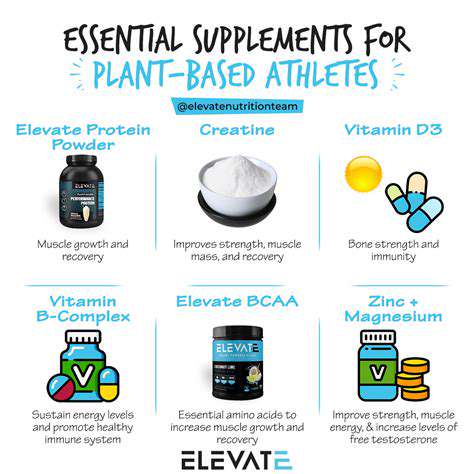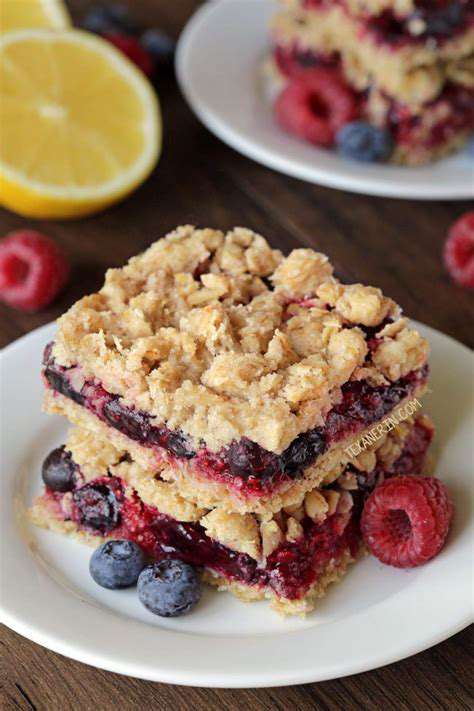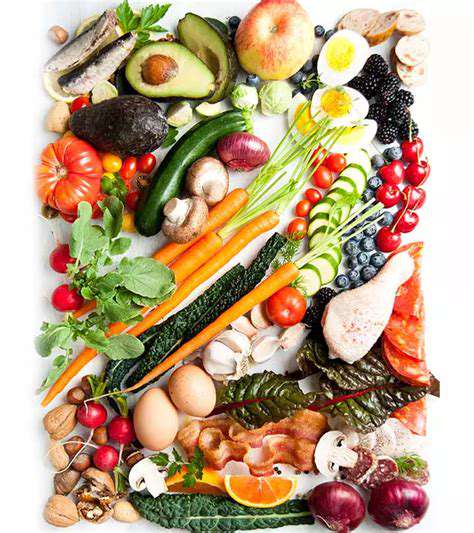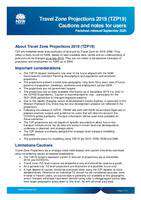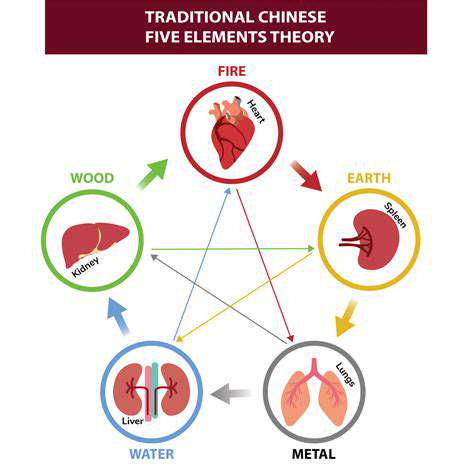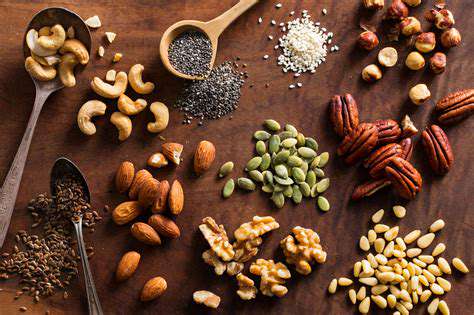Portion Control Made Simple: Visual Cues
Understanding the Basics of Hand-Based Portioning
Your hands provide built-in portion guides that adapt perfectly to your body size. This intuitive method works because hand size generally correlates with frame size and caloric needs - larger individuals naturally have larger hands that measure proportionally bigger portions. Unlike rigid measuring cups, hand measurements account for individual metabolic requirements while remaining simple to use anywhere.
The beauty of this system lies in its flexibility. For mixed dishes like casseroles or stir-fries, you can estimate components separately (protein palm, veggie handful, grain fist). With practice, these visual estimates become second nature, creating reliable portion awareness without tools. Many nutritionists find this method more sustainable than strict measuring because it develops innate judgment skills.
Portioning Protein with Your Hands
Your palm's thickness provides an ideal protein depth guide - about 1 inch thick matches most dietary recommendations. For fish fillets, a palm-sized portion typically provides 3-4 ounces of cooked weight. With ground meats, a lightly packed palm equals approximately 4 ounces raw. This visual measurement accounts for cooking shrinkage automatically - no need for separate raw and cooked weight calculations.
Protein density matters too. For high-fat options like salmon or ribeye, consider using just 3/4 of your palm size. Conversely, very lean proteins like shrimp or white fish can use the full palm measurement. This intuitive adjustment accounts for calorie density while maintaining portion volume for satiety.
Vegetables: A Handful of Goodness
The cupped hand measurement works beautifully for most vegetables, providing about 1 cup volume. For leafy greens, two cupped handfuls equal a serving since they compress during eating. Color variety matters as much as quantity - aim for at least three different colored vegetables per meal. This rainbow approach ensures diverse phytonutrients while creating visually appealing plates that satisfy both eyes and appetite.
Grains: Measuring with Your Hand
A clenched fist approximates 1 cup cooked grains - perfect for most adults' carbohydrate needs. For dense grains like wild rice or quinoa, consider using just 3/4 fist. With pasta, the hole in your fist (when making a circle with thumb and index finger) measures perfect single-serving dry pasta portions that expand to appropriate cooked amounts. These visual shortcuts prevent the common over-pouring that leads to grain overconsumption.
Fruits: A Visual Guide
Fruit portioning benefits from both hand measurements and visual comparisons. A medium apple or orange fits neatly in a closed fist, while berries fill a cupped hand. For sliced fruit, visualize a standard lightbulb's size - this 1 cup measurement works well for mixed fruit salads. Dried fruits require special attention - just a palm's worth (about 1/4 cup) equals a serving due to concentrated sugars.
Fats and Oils: A Thumb's-Up Approach
Your thumb from tip to first joint measures about 1 tablespoon - ideal for most fat portions. For high-heat cooking, use the full thumb length for oils. With calorie-dense fats like nut butters or cheese, just half a thumb (1/2 tablespoon) provides sufficient flavor and texture without excess calories. Remember that fats often hide in foods - your thumb measurement should account for both visible and invisible sources in a meal.
Beyond the Plate: Practical Applications
This portable system shines in real-world situations. At buffets, mentally divide your plate using hand proportions before serving. For packaged snacks, compare serving sizes to your hand measurements - if a single serving package holds more than your palm or fist, consider dividing it. When dining out, request a to-go box immediately and portion half the entrée using hand guides before eating. These practical adaptations make nutrition goals achievable anywhere.
Regular hand-measuring practice develops remarkable accuracy. After several weeks, you'll instinctively recognize proper portions without conscious measurement - a skill that lasts a lifetime and adapts as your needs change.
Beyond the Plate: Visual Aids for Snacks and Treats
Beyond the Plate: Enhancing Visual Appeal
Creating visually satisfying snack presentations requires understanding basic design principles. The Rule of Thirds applies beautifully to food arrangement - dividing your serving area mentally into thirds and placing key items at the intersections creates naturally appealing compositions. For small portions, elevation creates perceived abundance - use small pedestals or layer foods to add height.
Texture contrast boosts visual interest dramatically. Pair smooth hummus with crunchy vegetables, or creamy yogurt with granola clusters. This variation tricks the brain into perceiving more substance than uniform textures provide. Even simple touches like garnish sprigs or spice dusting add visual weight without calories, making modest portions feel indulgent.
Using Color and Texture to Your Advantage
Color temperature influences appetite - warm tones (reds, oranges) stimulate while cool tones (blues, greens) soothe. For energizing snacks, use vibrant warm colors. Evening treats might feature cooler hues to prevent overeating. Complementary colors (opposite on the color wheel) create maximum visual pop - think blueberries with orange slices or strawberries with kiwi.
Texture variety satisfies multiple sensory channels simultaneously. Combine creamy, crispy, chewy, and juicy elements in single portions to create fullness perception. For example, three small crackers with cheese, nuts, and fruit feel more substantial than six plain crackers. This multisensory approach satisfies cravings with smaller quantities.
The Power of Presentation: Platters and Bowls
Small-scale servingware controls portions elegantly. Asian soup spoons hold perfect single tastes for calorie-dense foods. Miniature ramekins (2-3 oz) ideal for dips and spreads prevent over-pouring. Consider using unconventional containers - egg cups for nuts, shot glasses for pudding, or Chinese tea cups for snacks. These novel presentations create psychological satisfaction through novelty rather than quantity.
Innovative Servingware for a New Perspective
Modern portion-control serveware includes ingenious solutions like segmented boards with built-in measurements, color-coded containers for different food groups, and even weighted plates that feel heavier with less food. Ice cube trays make perfect portion dividers for homemade frozen treats or snack mixes. Silicone muffin cups create natural portion boundaries for loose foods like trail mix or popcorn.
Incorporating Garnishes and Dips
Strategic garnishing follows the less is more principle. One perfect strawberry slice on yogurt provides more visual impact than several haphazard pieces. For dips, serve in narrow containers that limit scoop size naturally. Create visual markers - a line of paprika on hummus or herb sprinkle on cottage cheese defines portion boundaries while enhancing appeal.
Importance of Lighting and Background
Natural daylight shows food's true colors and textures, enhancing satisfaction. For evening snacks, warm directional lighting creates appealing shadows and highlights. Avoid fluorescent lighting which flattens food's visual dimension. Plain backgrounds (white or wood) keep focus on the food, while busy patterns can make portions appear smaller by comparison.
Beyond the Visual: Practical Tips for Success
Pre-portioning snacks immediately after purchase prevents mindless eating. Use clear containers so you always see what's available - opaque packaging often leads to accidental overconsumption. Implement the single-serving rule - never eat directly from large packages. Even with visual tricks, always pause before reaching for seconds - it takes 20 minutes for fullness signals to register.
Consistency and Habit Formation: Building on Visual Cues
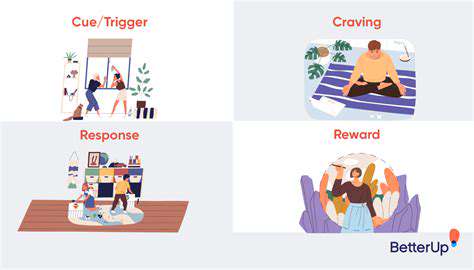
Consistency in Daily Habits
Visual consistency creates behavioral consistency. Setting your table the same way for portion-controlled meals builds powerful eating rituals that eventually feel automatic. Keep measuring tools visible and accessible - when portioning becomes the path of least resistance, it becomes the default choice. Consistency isn't about perfection; it's about creating clear patterns that guide behavior even on busy days.
Environmental consistency matters too. Eating in the same calm location (not in front of screens) trains your brain to focus on food. Using consistent plate colors and placemats creates visual anchors for proper portion sizes. These repetitive visual signals reinforce new eating patterns at a subconscious level.
The Importance of Habit Formation
Habits form through cue-routine-reward cycles, and visual cues are among the most powerful triggers. Positioning fruit bowls at eye level or keeping portioned snacks in clear containers at the front of the fridge creates automatic healthy choices. The visual organization of your kitchen environment directly influences hundreds of daily food decisions you make without conscious thought.
Strategic visibility extends to tools as well. Keep food scales and measuring cups on the counter rather than buried in cabinets. Post visual reminders like portion size charts inside cabinet doors. These constant subtle visual prompts reinforce new habits until they become second nature.
Strategies for Building Consistent Habits
Implement the 20-Second Rule for visual habit formation. Make desired behaviors (like portion measuring) 20 seconds easier to start by keeping tools handy, and undesired behaviors (like eating from large packages) 20 seconds harder to begin by storing them inconveniently. Small visual barriers or aids create dramatic long-term behavior changes by working with your brain's natural tendencies rather than against them.
Color-coding adds another visual reinforcement layer. Use green containers for unlimited veggies, yellow for controlled portions, and red for calorie-dense items. This traffic light system creates instant visual portion guidance without conscious effort. Over time, these color associations become automatic portion regulators.
Overcoming Challenges and Maintaining Consistency
Visual tracking provides motivation during challenging periods. A simple calendar with gold stars for days you followed portion guidelines creates visible progress. Photographing your properly portioned meals builds a visual library of reference for days when willpower flags. These concrete visual records make abstract goals tangible and achievable.
For travel or disruptions, create portable visual reminders. A photo of your ideal plate composition on your phone or a bracelet marking portion sizes helps maintain habits anywhere. The key is translating your visual cues into flexible formats that work in any environment, ensuring consistency isn't broken by life's inevitable variations.
